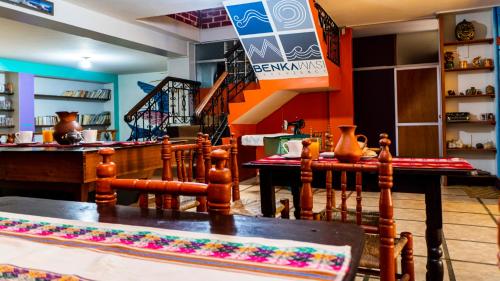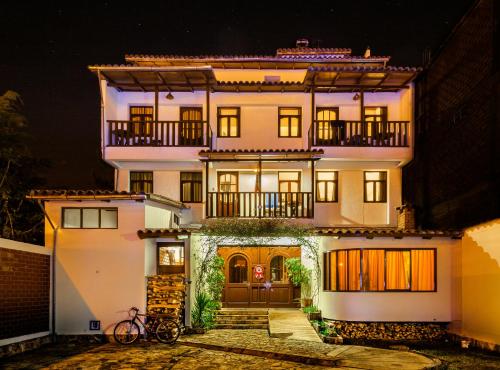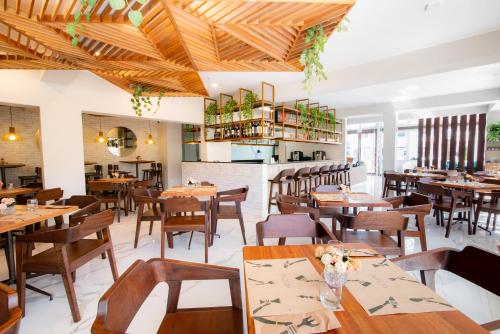Chavin de Huantar, Peru
Discover the ancient culture of the Chavin civilisation, where drugs and human sacrifice were all part of the spiritual connection to nature. Visiting Chavin de Huantar in Peru is quite an incredible experience!
“Of all of the ancient cultures I admire, that of Chavin amazes me the most. Actually, it has been the inspiration behind most of my art.”
Pablo Picasso
You know you’re probably on to a good thing when it gets the (rather abstract) tick of approval from Pablo Picasso. It’s an obscure thing, though, for a painter of the twentieth century to be drawing inspiration from a culture that existed about 3000 years earlier.
It’s especially obscure when you consider that almost nobody has heard of the Chavin.
I certainly hadn’t heard of them until I decided to visit their most famous site – Chavin de Huantar. The Incas were not the first civilisation to build an empire in the Andes of Peru.
Oh no. The Chavin were doing exactly that more than 2000 years before them. Three thousand metres above sea level, they were making their mark as one of the strangest cultures Peru would ever see.
To get to Chavin de Huantar, I set out from the city of Huaraz, which is about 400 kilometres north of Lima. If a crow was flying to the site, it would be quite a quick journey, but the winding road through the mountains takes about three hours on the bus.
I couldn’t find an easy way to do it independently so I’ve joined a tour for the day, which seems to be the option most people go for. Our guide speaks only Spanish, though, and my ability to ask for the bathroom and for more beer (the two go well together) isn’t helping me understand him.
I’m enjoying just looking at the Chavin de Huantar site, though. Unlike the ruins of Caral on the desert plains near the coast, these are surrounded by deep green mountains.
The remains of the stone buildings almost blend in with the mountains around them, rising up from the ground, the rough brown and grey sides leading up to small unkempt lawns of grass on top.
The structures here have been built at different levels on the landscape so it appears as if they are rising and falling just like the peaks around them.
“You don’t speak Spanish?” a woman in the group asks me, as I’m taking a photo of a temple.
She’s Peruvian and has just been having a conversation with another local about my apparent disinterest in the guide. She’s concerned that I’m not getting the most out of the trip and so she starts to translate a bit and tell me about what I’ve missed.
As she tells me about the hallucinogenic drugs, the human sacrifices and the underground tunnels that mimic animal noises when wind blows through them, I’m suddenly a lot more interested in what I’ve been missing out on.
I also start to understand why Pablo Picasso found these people so fascinating.
The guide points to a sculpture protruding from a wall. It looks a bit like the head of a cat but there’s something human about it too.
My new translator leans over and tells me that the religious leaders here used to take hallucinogenic drugs and this is a representation of what they thought they became. That’s pretty far out.
In fact, a lot about the Chavin culture was pretty far out. Historians don’t know a lot of the details because there was no form of writing, but they’ve pieced together quite a bit. These leaders – or shamans, would probably be more accurate – got their highs from the San Pedro cactus.
They believed they then turned into animals, bringing them spiritually closer to nature. Their main religious totem, a five metre tall stone column called the Lanzon, is carved with images of these animals.
Human blood, poured over the Lanzon, was probably how the Chavin prayed for rain, healthy crops or other good fortune. But the prayers were most likely loud and powerful.
Special tunnels had been constructed so that when the wind blew through them, the sound mimicked the roar of a jaguar, for instance. And other gutters and pipes would flow water through the ceremonial areas, possibly at torrential rates.
The Chavin culture survived for about 700 years but it was never a military might. It maintained its power over its neighbours through the strength of its culture – particularly its spirituality.
I mean, who is going to argue with a ruling class of half men, half cats who bring forth the roars of the mountains’ predators?!
What is Chavin de Huantar?
Chavin de Huantar is an archaeological site in northern Peru, about 40 kilometres east of the city of Huaraz, and about 270 kilometres north of Lima.
It was the religious centre of the Chavin civilisation, which developed here between about 1500 BC and 300 BC, and it has been designated as a World Heritage Site.
Why is Chavin de Huantar important?
Chavin de Huantar is not just significant because it’s old, it’s also important because of the complexity that’s shown in the monuments and the decorations of the site. The art that was created here and the way that it was incorporated into ancient religious ceremonies is quite astonishing.
What were the Chavin known for?
The Chavin were known for a few important developments. Firstly, they were able to domesticate llamas and built an advanced irrigation system for agriculture. They were also skilled at metallurgy and engineering.
But they are most famous for using these talents to build and decorate stunning temples where they worshipped their gods through debauched ceremonies involving drug use and human sacrifice. The art that remains is the most important legacy of the Chavin civilisation.
What religion were the Chavin?
The religion of the Chavin civilisation is one of the most interesting things about them. It’s not comparable to any modern religion and was based on multiple gods. The gods had human-like forms but were based on animals and other things found in nature. The main deity had long fangs and hair made of snakes. Another popular one had the head of a jaguar.
When you understand all of this, it’s maybe more understandable that this culture is still having such a strong impact on people like Pablo Picasso thousands of years later. Although, maybe you need to be an artist of great imagination to imagine in your own mind what these ancient shamans once saw in their visions.
Visiting Chavin de Huantar
Most people use the city of Huaraz as the base for exploring Chavin de Huantar, and that’s what I would recommend. If you’re travelling in this part of Peru, Huaraz is a great place to visit anyway and you might want to consider doing the hike to Laguna 69 or something similar in Huascaran National Park.
From Huaraz, I really recommend taking a tour to Chavin de Huantar. It’s not particularly expensive and there is no simple way to do it independently. If you really insist on doing it yourself, you’ll need to take a bus to the town of Chavin and be prepared to stay the night if you want to spend a decent amount of time at the archaeological site.
When it comes to tours, you may find that your accommodation in Huaraz is able to find something for you, but you might prefer to have something booked in advance. I would recommend either this Chavin de Huantar tour or this tour to Chavin. Both of them leave from Huaraz and are likely to have a Spanish-speaking guide, though.
If you do plan to stay in Chavin, it might make sense to book some accommodation in advance.
The most popular option for travellers is Hotel Restaurante Chavin Turistico.
But another decent option, that’s usually a bit cheaper, is Hotel Inca, which is nearby.
THE BEST ACCOMMODATION IN HUARAZ
You may find the easiest way to visit Chavin de Huantar is to stay in Huaraz and take a tour.
BACKPACKER

A quiet and relaxed spot to stay, Benkawasi Experience Huaraz also has a rooftop terrace with mountain views.
BUDGET

Close to the city centre and restaurants, Hotel Turístico Everest is clean, spacious, and comfortable.
BOUTIQUE

Although it’s out of town, Hotel Santa Cruz has a wonderful homey atmosphere with mountain views and free breakfast.
LUXURY

With a fantastic location, El Tumi Hotel manages to blend modern touches with a traditional welcoming atmosphere.
Wow, I hadn’t heard of the Chavin either! One would think you would at some point because of their eccentricities. Very interesting. Thanks for sharing this!
Well, I’m sure there were lots of pretty wacky cultures back then… but these guys were certainly out there! 🙂
Wow, what a fascinating place. We were in Huaraz two to three months ago but didn’t get a chance to visit unfortunately.
Oh, what a pity. There is lots to see and do in the surrounding area and I would love to go back sometime and see more. What did you get up to? Any recommendations?
What a fascinating place. I love that you’ve stepped outside the normal tourist destinations and discovered something new for us all.
This place was a long way from the normal tourist spots – but that’s an element of visiting it that I enjoy. I find that when I go to the obvious places you’ve seen a million times, it’s not as special. There’s more personal discovery in sites like this.
Hallucinogenic ancients, that’s awesome! I wonder how they were able to construct those tunnels to mimic the roars of jaguars? I’m sure they got the idea on one of their “trips.” Too bad they didn’t leave behind any writings though.
Yeah, I don’t know how hey did the tunnels. Maybe they just discovered in by accident. Or maybe they never actually did it and they just though they did when they were high! Ha, I like your suggestion that they constructed it all while they were tripping as cats! 🙂